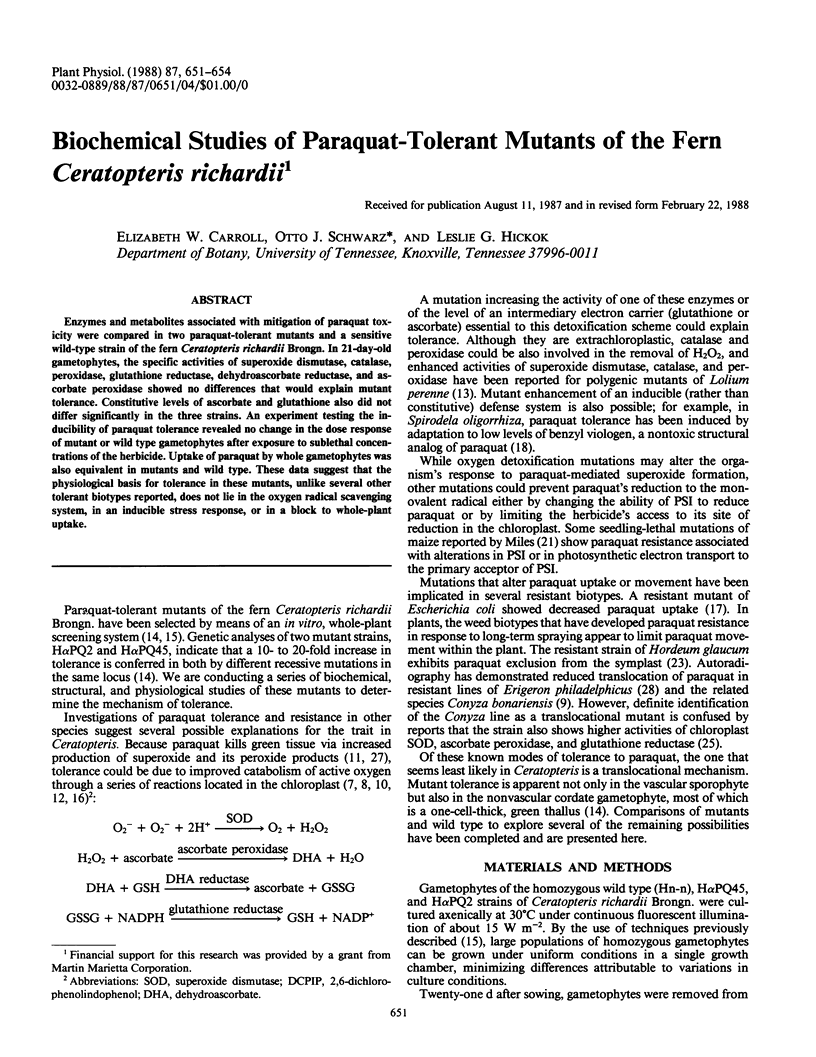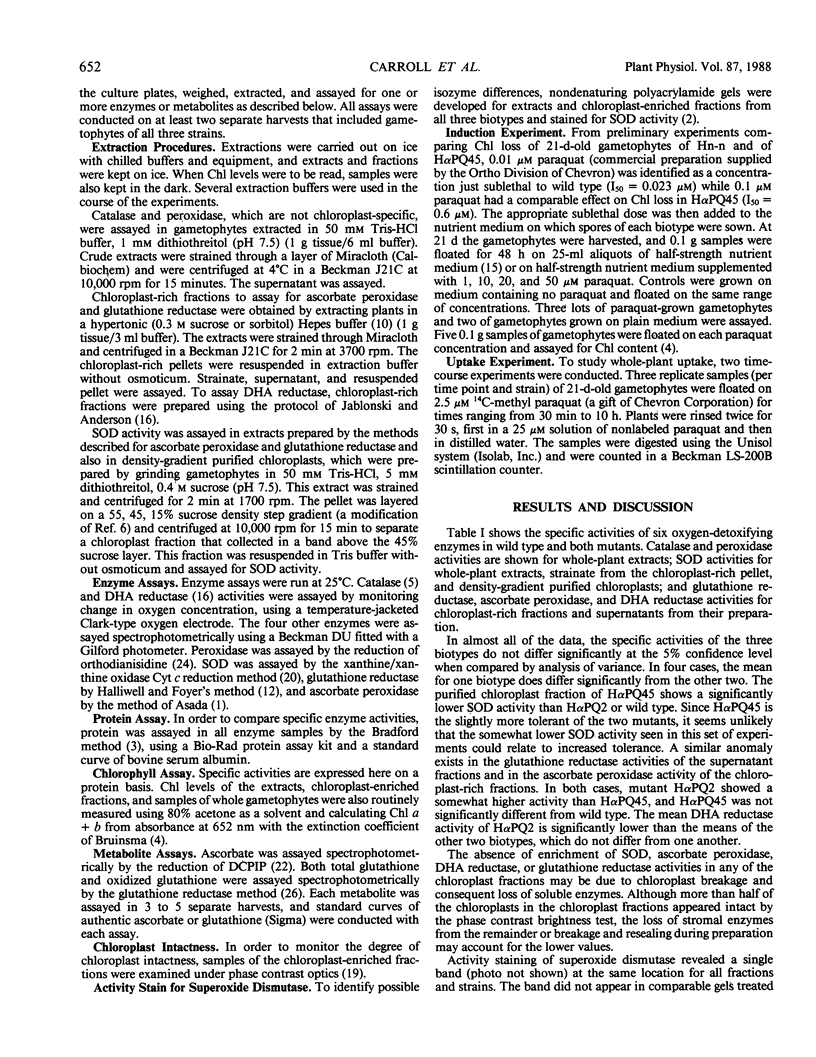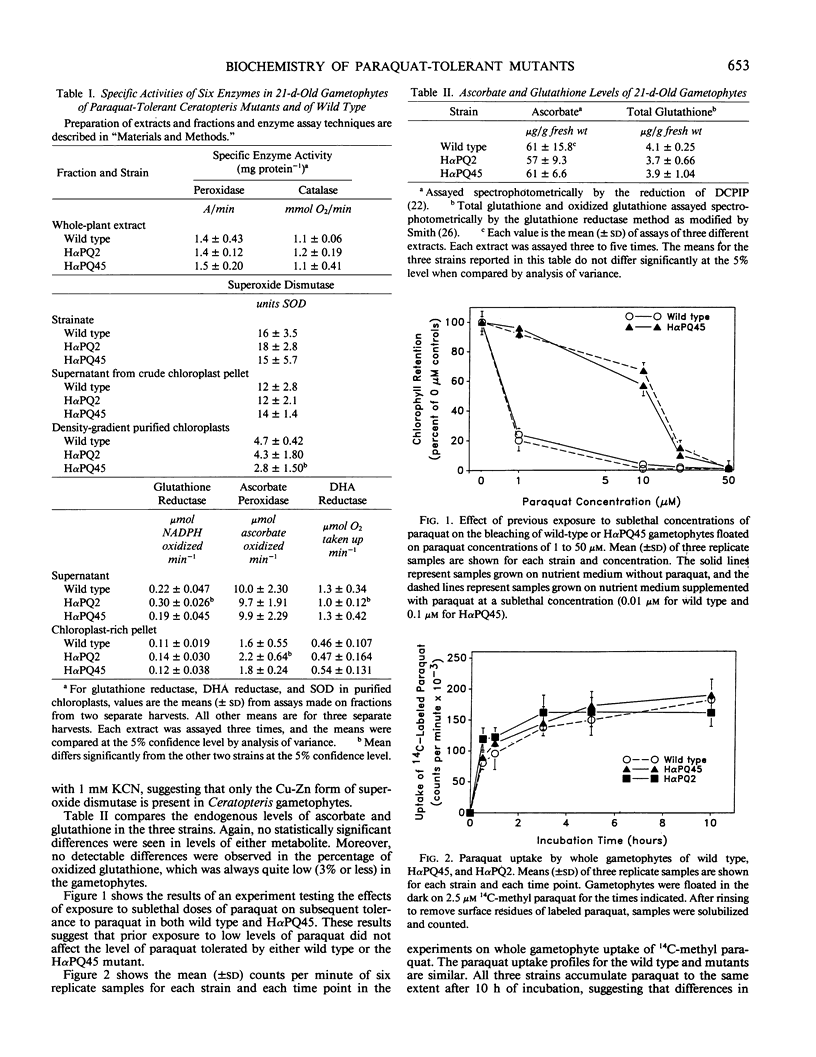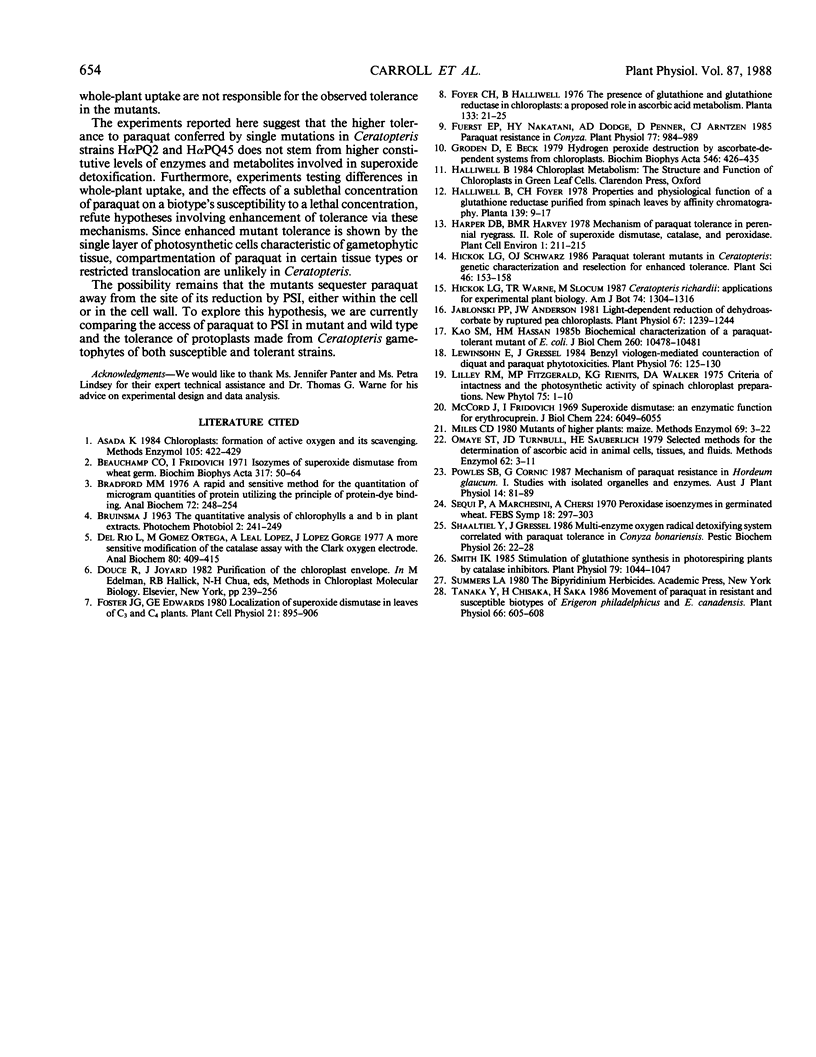Abstract
Enzymes and metabolites associated with mitigation of paraquat toxicity were compared in two paraquat-tolerant mutants and a sensitive wild-type strain of the fern Ceratopteris richardii Brongn. In 21-day-old gametophytes, the specific activities of superoxide dismutase, catalase, peroxidase, glutathione reductase, dehydroascorbate reductase, and ascorbate peroxidase showed no differences that would explain mutant tolerance. Constitutive levels of ascorbate and glutathione also did not differ significantly in the three strains. An experiment testing the inducibility of paraquat tolerance revealed no change in the dose response of mutant or wild type gametophytes after exposure to sublethal concentrations of the herbicide. Uptake of paraquat by whole gametophytes was also equivalent in mutants and wild type. These data suggest that the physiological basis for tolerance in these mutants, unlike several other tolerant biotypes reported, does not lie in the oxygen radical scavenging system, in an inducible stress response, or in a block to whole-plant uptake.
Full text
PDF



Selected References
These references are in PubMed. This may not be the complete list of references from this article.
- Beauchamp C. O., Fridovich I. Isozymes of superoxide dismutase from wheat germ. Biochim Biophys Acta. 1973 Jul 12;317(1):50–64. doi: 10.1016/0005-2795(73)90198-0. [DOI] [PubMed] [Google Scholar]
- Bradford M. M. A rapid and sensitive method for the quantitation of microgram quantities of protein utilizing the principle of protein-dye binding. Anal Biochem. 1976 May 7;72:248–254. doi: 10.1016/0003-2697(76)90527-3. [DOI] [PubMed] [Google Scholar]
- Del Río L. A., Ortega M. G., López A. L., Gorgé J. L. A more sensitive modification of the catalase assay with the Clark oxygen electrode. Application to the kinetic study of the pea leaf enzyme. Anal Biochem. 1977 Jun;80(2):409–415. doi: 10.1016/0003-2697(77)90662-5. [DOI] [PubMed] [Google Scholar]
- Fuerst E. P., Nakatani H. Y., Dodge A. D., Penner D., Arntzen C. J. Paraquat resistance in conyza. Plant Physiol. 1985 Apr;77(4):984–989. doi: 10.1104/pp.77.4.984. [DOI] [PMC free article] [PubMed] [Google Scholar]
- Groden D., Beck E. H2O2 destruction by ascorbate-dependent systems from chloroplasts. Biochim Biophys Acta. 1979 Jun 5;546(3):426–435. doi: 10.1016/0005-2728(79)90078-1. [DOI] [PubMed] [Google Scholar]
- Hallock GA, Wootton AJ, Hickok RL. Space-potential and density fluctuations in the ISX-B tokamak. Phys Rev Lett. 1987 Sep 21;59(12):1301–1304. doi: 10.1103/PhysRevLett.59.1301. [DOI] [PubMed] [Google Scholar]
- Jablonski P. P., Anderson J. W. Light-dependent reduction of dehydroascorbate by ruptured pea chloroplasts. Plant Physiol. 1981 Jun;67(6):1239–1244. doi: 10.1104/pp.67.6.1239. [DOI] [PMC free article] [PubMed] [Google Scholar]
- Kao S. M., Hassan H. M. Biochemical characterization of a paraquat-tolerant mutant of Escherichia coli. J Biol Chem. 1985 Sep 5;260(19):10478–10481. [PubMed] [Google Scholar]
- Lewinsohn E., Gressel J. Benzyl viologen-mediated counteraction of diquat and paraquat phytotoxicities. Plant Physiol. 1984 Sep;76(1):125–130. doi: 10.1104/pp.76.1.125. [DOI] [PMC free article] [PubMed] [Google Scholar]
- McCord J. M., Fridovich I. Superoxide dismutase. An enzymic function for erythrocuprein (hemocuprein). J Biol Chem. 1969 Nov 25;244(22):6049–6055. [PubMed] [Google Scholar]
- Omaye S. T., Turnbull J. D., Sauberlich H. E. Selected methods for the determination of ascorbic acid in animal cells, tissues, and fluids. Methods Enzymol. 1979;62:3–11. doi: 10.1016/0076-6879(79)62181-x. [DOI] [PubMed] [Google Scholar]
- Smith I. K. Stimulation of glutathione synthesis in photorespiring plants by catalase inhibitors. Plant Physiol. 1985 Dec;79(4):1044–1047. doi: 10.1104/pp.79.4.1044. [DOI] [PMC free article] [PubMed] [Google Scholar]


